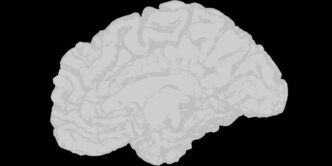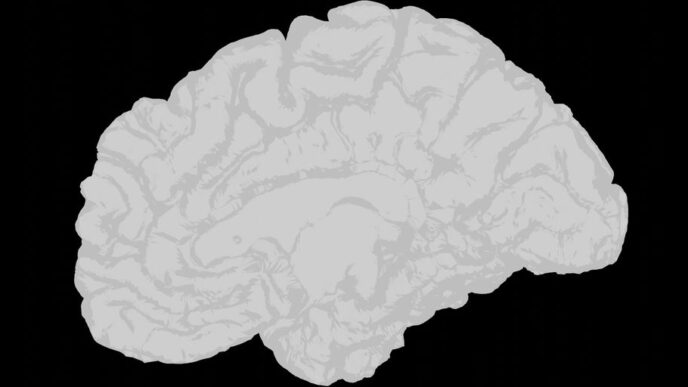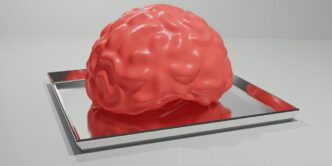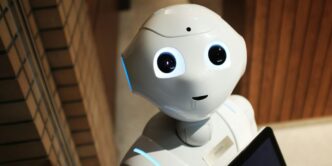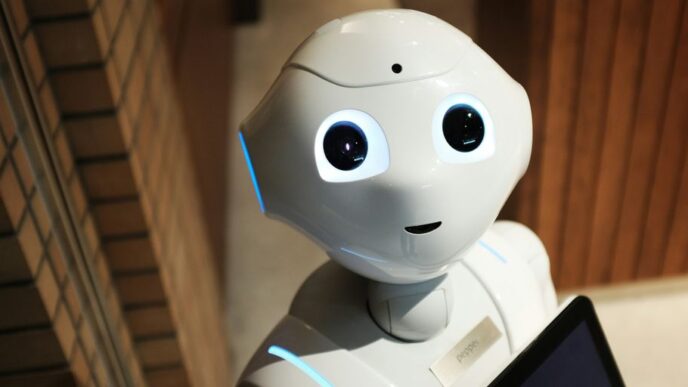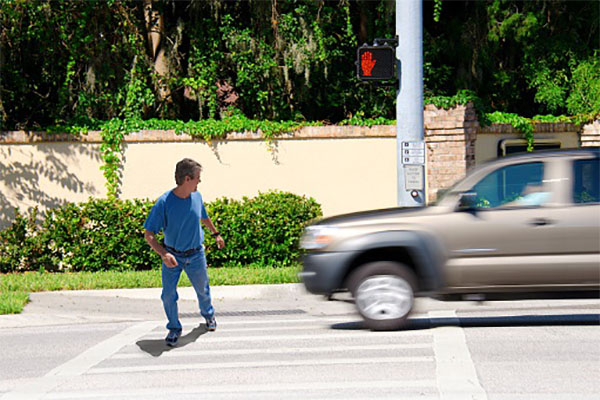
By Lance Eliot, the AI Trends Insider
Being from California, I remember one of the first times that I visited New York City (NYC) and made the mistake of renting a car to get around the famous metropolis. I had figured that driving a car around the avenues and streets would give me a good sense of how the city that never sleeps was laid out and where the most notable restaurants, bars, and shops could be found.
Turns out that I mainly discovered how much New Yorkers seemed to delight in jaywalking.
It was as though there weren’t any rules against jaywalking.
Want to cut across the street and get over to that popular hangout, no need to walk down to a crosswalk, instead just make your way by walking into traffic. In most cases, the jaywalker didn’t even run. One might almost think that you would dart rather than meander, but these fearless jaywalkers tended to take their time.
I also found out about the techniques involved in making a devoted stare or gaze that appeared to be a local custom.
In some cities, the jaywalker purposely does not make eye contact with the car drivers, seemingly acting as though the car drivers don’t exist.
Or, maybe by making eye contact it would become a duel to see who looked away first, and the loser perhaps has to back-down from the standoff.
In any case, my experience was that the jaywalkers in NYC loved to give the car drivers a straight eye.
This might be the same kind of thing you’d do when you encounter a wild animal in the woods. Given them a strong stare might say that you are mighty and the animal should not try to take you on. Some of the car drivers that were locals or that were used to the local customs would often give a stern stare back. On a few occasions, it would get really testy and the jaywalker would wave an arm and act as though they might try to slay the dragon of a car coming down the street.
I admit that after I turned in the rental car and became more of a traditional pedestrian on my visits to NYC, I adopted the jaywalking habit.
This was especially so because during one of my initial forays as a pedestrian there, I was walking with a colleague that was a native New Yorker, and when I attempted to walk down to a crosswalk, rather than taking the shortcut of jaywalking, he almost came out of his skin at my legal abiding approach.
Are you nuts, he asked or demanded incredulously?
Walk half a block down, cross the street at a light, and walk a half block back up, just to get to something that you could make a beeline to?
I regret that perhaps it gave another black eye in his NYC mindset of my being from the West Coast.
He even justified the jaywalking in a manner that perhaps most would not.
He insisted that it was actually more dangerous to cross at a marked crosswalk, at least in NYC, than it was to jaywalk. I doubt that he had any actual statistics to back the claim, but it certainly sounded convincing. He had me watch the cars turning at a busy corner and pointed out that I would seemingly be more likely to get run over there. With a jaywalking maneuver, he emphasized that I could pick my own choosing of when and where to cross, presumably therefore somehow being a much safer adventure than depending upon an actual marked crosswalk.
Where I grew up in California, jaywalking was generally frowned upon and only undertaken as some kind of last resort.
If you had a broken leg and could not walk all the way to a corner, okay, maybe you could do a jaywalk, but only if the street was absolutely clear of traffic. No “frogger” kind of playing in my neighborhood. I remember my parents even hinting that the cops would likely be driving down the street just as I might try to jaywalk. This made me envision a life of sitting in prison due to having gotten caught red-handed doing a jaywalk. I wondered whether I would do hard time and also if I might ever be able to make parole due to the seriousness of my transgression against society’s rules.
One time, a relative from New York came out to visit and noticed that some of the streets in my neighborhood had a posted sign that indicated jaywalking was prohibited.
First, he laughed at the sign and declared it to be a total waste of taxpayer money.
Second, he interpreted the sign to imply that wherever there wasn’t a similar sign, it meant that you could legally jaywalk, and do so as much as your heart might desire. I tried to explain that jaywalking was generally outlawed locally and the purpose for the signs was to highlight the law, particularly in places where it was known that people tended to jaywalk, even though they weren’t supposed to do so, and serve as a reminder of the law.
Styles of Jaywalking
Since I had not seen much jaywalking growing up, it was fascinating to watch it occur while I had various stays in NYC.
I noticed for example that the time of day seemed to make a difference in terms of the volume and nature of the jaywalking.
Mornings, when pedestrians were trying to get to work, often stoked a lot of jaywalking, perhaps to try and get to work promptly and minimize the time required to get to the office.
There was also the amount of traffic that played a role in the jaywalking. If the traffic on a given street was completely backed-up and stuck, jaywalkers would in droves weave in and around the cars, doing so without a care in the world since they perceived that the wild animals (the cars and car drivers) were jammed in place and couldn’t do much to run them over. As soon as a green light allowed the traffic to flow, the jaywalkers became more cautious and realized it was now “game on” in terms of trying to time when to best engage in jaywalking.
If a street had intermittent traffic, and if the cars that used the street considered it to be a kind of race track to quickly make some progress through the slew of blocks of NYC, the jaywalker had to be much more nimble and aware. Will that car that just turned onto the street be burning rubber and get to where you are going to jaywalk, reaching an intersecting point in the middle of the street just as you are halfway done with your jaywalk maneuver? These crazed drivers made it appear that they were not going to stop for anything and nor anyone. I don’t care if you had your pet elephant on a leash and were jaywalking with it, these mean looking and solemn minded drivers were willing to smash their car into whatever might be in the roadway. The road was there’s and no one dare suggest otherwise.
The weather also played a part in the jaywalking ritual.
Rainy days meant that the jaywalkers had an even greater incentive to jaywalk. Why waste time and get wet in the rain, when you can scoot across a street and do so quickly enough that perhaps rain drops themselves won’t touch you. The problem with the feverish effort to jaywalk in rain was the car drivers were likely to also be more crazed than usual. I suppose this was because the rain tended to hamper traffic and therefore the way to make-up for it was to speed and be a bit more careless of your driving. I realize you might assume it should be the opposite, namely you would slow down in the rain and be more careful, but that’s not often the choice that drivers seem to make (this almost seems like a universal constant!).
At times, I pondered the nuances of Mutually Assured Destruction (MAD), which you might remember was popularized during the Cold War era. When the two hunkering superpowers of the United States and the Soviet Union had their nuclear arms race, it was postulated that if either one attacked, the other would surely attack, and in the end they would both obliterate each other.
This came to mind as I watched some of the jaywalking duels in NYC.
An energetic jaywalker would enter into the street.
A zealous driver would gun their engine and seem to aim for the jaywalker.
Which would win the race?
I’m sure you are pleading that obviously the car will win, since a mere human is not going to have super powers to stop the car in its tracks. In that sense, certainly the car can always prevail by running over the human. You might think that’s what would happen. Instead, it was interesting that even the nuttiest of drivers seemed to realize that running over a jaywalker was not an advisable thing to do.
Presumably, the car driver might be thinking that they could possibly get prosecuted for running over a jaywalker. Or, maybe they were worried it would dent their beloved car. Or, they might be concerned that their insurance rates would get jacked sky-high. There’s also the possibility that the driver might not want to maim a fellow human being. Well, being realistic, I’m putting that on the bottom of the list of reasons why the drivers did not summarily run over the jaywalkers.
So, it was often a Mutually Assured Destruction kind of battle.
The jaywalker figured that the driver figured that hitting the jaywalker would not be a good thing to do. The driver figured that the jaywalker figured that getting hit by a car was not a good thing to have happen. Either way, if a physical connection was going to be made, it was a lousy outcome for both parties.
Some of the jaywalkers acted as though they had a special invisible shield that would protect them. They would walk across the street whenever they darned wished to do so. They seemed to believe that the drivers would ultimately acquiesce and not want to run over a jaywalker. Admittedly, this did seem to work a lot of the time.
When I mentioned to one of my NYC colleagues that the Mutually Assured Destruction won’t serve as a deterrent unless both parties are cognizant and aware of what is taking place, he shrugged it off. I was trying to explain that if say the driver is not paying attention to the road, and not especially cognizant of the presence of the jaywalker, the driver could ram into the jaywalker out of “ignorance” and the jaywalker’s expectation of being protected by MAD went out the window. The MAD approach only worked if the driver was truly paying attention to the road.
Driver Attention And Jaywalkers
In my estimation, a sizable chunk of drivers were not attuned to the presence of the jaywalkers.
This made sense since the drivers were having to contend with bigger game, such as large trucks trying to make deliveries and rapidly exiting and entering unexpectedly into the street and avenues. There were other crazed car drivers jockeying for position. There were often obstacles on the roadway such as a pallet of liquor bottles being delivered to a liquor store.
If you were a driver in that environment, which is a more suitable aspect to pay attention to?
The trucks and other cars are likely more harmful to you and your car. The solid obstacles on pallets could do some real damage to your car if you hit them.
A jaywalker?
Not the highest priority.
Furthermore, many of the drivers seemed to consider that a jaywalker did jaywalking at their own risk. In essence, the car driver did not have to pay attention to the jaywalkers because the jaywalkers were “required” to always make sure to avoid getting hit by a car. It was as though a flock of birds were flying around the cars. A driver shouldn’t have to watch out for the birds. The birds should be astute enough to not flap into a car. The jaywalkers were assumed to be hopefully as astute as a dumb bird.
Another factor involved sizing up the jaywalker.
How was the jaywalker dressed and what kind of look did they have?
If a driver saw a jaywalker that seemed like a seasoned New Yorker, it suggested that the jaywalker could take care of themselves and no further driver attention was needed. If the jaywalker looked like a wide-eyed tourist, well, this might present a problem because the “amateur” jaywalker might foul things up. The “professional” jaywalkers knew how to assiduously cross a street. Those out-of-town jaywalkers were bound to mess-up the delicate dance of true jaywalkers and NYC drivers.
I’m sure that when I drove my rental car, the jaywalkers could sense my out-of-town smell.
Fresh meat, easy pickings.
I was the type that they could jaywalk to their hearts content on. Indeed, when I saw a jaywalker, I tended to give them a wide berth. The seasoned NYC drivers in contrast would always relish getting within inches of the jaywalker, as though it was a sweet kiss of “you just made it” and the jaywalker should thank their lucky stars for surviving the jaywalking act (and bend down in reverence to the car driver).
When it got somewhat late at night, I observed that there would be a segment of jaywalkers that were a bit intoxicated, having visited their preferred pub for some after-work libation. This seemed to dampen their wits as jaywalkers. I’m betting that they would contest this claim and say that they were still on their toes. In any case, there were definitely more close-calls on the jaywalker versus car aspects. This might also be further fueled by the likelihood of having drivers that were now also somewhat drunk. A potent combination, having both slightly drunk jaywalkers and slightly drunk drivers.
Herd Mentality Of Jaywalking
In most cases, I observed individuals acting as jaywalkers.
This though was not always the case and there were frequently situations of multiple jaywalkers proceeding all at once. There was at times a herd mentality. If one of the jaywalkers went for it, the others were sure to follow. Now, this actually often made sense, since the first one likely found an opening to jaywalk and the others also perceived the same opening.
There were times though that the first jaywalker got the herd underway, not necessarily overtly, more so subliminally in that the other jaywalkers saw the first one make a move and opted to proceed too, but it turned out that the first jaywalker didn’t gauge things well. The first jaywalker might have gotten somewhat stranded in the street, not able to fully make it across the street just yet. Meanwhile, the herd that followed was also now stranded. You could see the look on their faces that they had assumed they could make it fully across the street and were befuddled and irked that the move had not been timed well.
There were some “leaders” of the pack that weren’t thinking at all about the rest of the herd. Therefore, they were not trying to find a big enough opening to get a dozen people across the street all at once. They were focusing on just themselves. In that case, sometimes the first mover made it across, but the others did not, and they had somehow assumed that if the first mover could do it, the rest of them could.
I suppose you could see this as a series of locking mechanisms that just happen to line-up precisely in a moment of time. The first mover has “calculated” that they can thin their way through the sporadic cars and make it across. It is though just a moment in time action. A split second later and the opportunity has vanished. Likewise, the alignment of the cars is not just a moment in time, but also a moment in space, as it were. The first mover at their position say halfway of the block, would have a different timing and clearance of an opening, versus if you were at a quarter way of the block.
The ones that got my heart pumping were situations in which two people were holding hands and opted to rush across the street together. As you can imagine, trying to get two people across on a precisely timed jaywalk is a lot more complex. If one of the two falters it can defeat the open window and you now have to figure out what to do. It was surprising at times to see how much connectedness was retained by the two.
In other words, two people are holding hands. This is obviously just a temporary connection in that their two hands are not glued to each other. They can separate their hands whenever they wish. And yet, in some cases, the pair would try to remain entangled, in spite of the danger of doing so. Just a mere dropping of their hands would allow them both to become free agents and more nimbly finish the jaywalk.
This though seemed to be the further most thought in some of their minds. It was as though the separating of their hands meant more to them than the chances of getting hit by a car. Was it true love that kept them together in that life risk move? Was it concern that the other one might feel abandoned and it could forever undermine their relationship? Maybe it was out of deep caring and the belief that by sticking together they could survive anything, including a crazed driver barreling down the street directly at them.
There’s another kind of coupling sometimes that occurs, involving a jaywalker that is jaywalking with their dog. The jaywalking human might be hand carrying the dog, having lifted the dog up and embracing the animal like you would carry a football. This makes sense in that having the dog walk on a leash is going to be much more uncontrollable as you make your way across the street. For those that don’t try to carry their dog, perhaps due to the weight and size of the dog, the leash approach can be quite dicey.
I remember seeing a man walking his dog that had a leash several feet long and as the man attempted to jaywalk, the dog tried to go in a different direction. This meant that the jaywalker was now several feet wide, if you consider the distance from him to his dog, making it much harder to nimbly get across the street. He pulled strenuously on the leash, nearly dragging the dog, as he desperately tried to bridge the chasm from one side of the street to the other.
In this case, he was somewhat strongly coupled because letting go of the leash would have produced perhaps even worse results. The dog might have scampered directly into traffic that otherwise the jaywalking human might have aided the dog in avoiding. All in all, I would say that any animal lovers would look upon these jaywalkers with some disdain, as it is one thing to put your own life into jeopardy and quite another to subject an innocent dog to the same kind of risk.
This reminds me too of a common refrain that my New York colleagues would use on me.
They would say that any jaywalker is making their own decisions and if they get hit, well, that’s their own doing. Why should the government tell them what they can and cannot do. It’s up to the individual to choose to jaywalk or not, and it is on the head of that jaywalker as to whether they risk their life and limb or not.
I don’t buy into this claim per se.
It seems to leave the car drivers out of the equation. If a car driver hits a jaywalker, it’s going to be a great deal of difficulty for the car driver, though yes I agree it is unlikely the car driver will be killed, but they could get injured. Furthermore, suppose the car driver is so anxious to avoid hitting a wayward jaywalker that the driver rams into another car? Now, you’ve got other people also enmeshed into the jaywalking effort.
There is also a chance that while the car driver is trying to avoid a jaywalker, the driver swerves and maybe hits other jaywalkers (I realize the view would be that’s on them, if you take the individualist free agent perspective), or might come onto the curb and hit pedestrians (one would argue those pedestrians were innocents).
Generally, a jaywalker can start a cascading series of events that ultimately lead to others getting injured or killed.
I therefore tend to reject the idea that a jaywalker is performing a “victimless” act, assuming that you don’t count the jaywalker as a victim, and contend that the jaywalker is potentially going to involve one or more car drivers, perhaps one or more passengers in those involved cars, maybe other jaywalkers, and potentially innocent pedestrians that were mindfully using the sidewalk.
Here’s another angle for you.
What about the children?
Children Learning About Jaywalking
I’ve seen jaywalkers holding the hand of a child or a group of children and trying to make a jaywalking attempt with them. Similar to my earlier point about coupling between two adults, in theory the coupling is loose since the hands can be disengaged readily. In the case of children, the danger obviously is that if the adult jaywalker does let go of the hands of the children involved, the children might not know what to do and get themselves into worse hot water.
I realize some would argue that of course the adult needs to hold the hands of the children and would accuse me of somehow suggesting that children should roam freely as jaywalkers. Let’s be serious, I’m not implying that children should be unescorted by an adult when jaywalking. The thing is that children should not be jaywalking at all.
I’ll probably get emails from some readers that will say that their children have “no choice” but to jaywalk and so which will it be, the children do so on their own or with an adult? I guess if there is really no other viable way to get to someplace other than jaywalking, yes, an adult jaywalker participant is the way to go. Is it really the case that there is no other viable way to get to the location other than jaywalking?
There are some that have said to me that it would require walking several added blocks and take another 15 minutes to get to the desired location, such as a school. Well, one has to then consider the ROI (Return on Investment) of walking those extra blocks and using those added 15 minutes, doing so presumably in a safer manner, versus the risks associated with doing the beeline jaywalking. Is there an appropriate risk/reward that says the added risk to the child makes the jaywalking act worthwhile?
One other qualm about involving children into jaywalking is the aspect that they essentially then come to believe that jaywalking is acceptable.
If they do jaywalking with an adult, it is a slippery slope that can readily assume they can do jaywalking on their own. Indeed, some children will happily go jaywalking to showcase to their parent that they are now sentient and their own agent and no longer need to have an adult aid them in the jaywalking. It is a kind of rites of passage.
The counter argument from some adults is that if they don’t show the child how to “properly” jaywalk, the odds are that the child is going to do jaywalking anyway at some point, and without having done so with a “responsible” adult, the child is going to be more prone to getting hurt when trying to go jaywalking based on no prior instruction. Some would say that having a head-in-the-sand viewpoint of being a parent that pretends jaywalking will never happen, will merely make the child more vulnerable than if you instead do a parent-child jaywalking effort with the child.
There are some aspects of the counter-argument that I do tend to side with. In the case of my own children, I did practice going jaywalking with them, which I did to point out how to do so and what to watch out for. This was done though on a selective basis and only as a means to aid them in being prepared in case jaywalking was needed at some point. I tried to make clear cut that jaywalking was considered inappropriate and that the instruction was not meant to open the sport of jaywalking to them.
This also gets to the core of an aspect about children and child rearing. For those of you with children, you’ve likely been torn about whether to show or explain something to the child, for which you wonder whether you are introducing them to something that will spur them to do the thing you are trying to showcase should not be done. The classic is “don’t put your hand in a stove top burner,” which could backfire in that the child might not have thought to do so, and now they are curious to try it, because you made such a big deal about it.
In any case, another facet of jaywalking is the possibility of adult jaywalkers, child jaywalkers, and combinations of both adult and child aged jaywalkers.
There’s the special twist of the jaywalker that drops something while in the act of jaywalking.
The Dropped Item As Jaywalking Factor
I saw a jaywalker that was carrying his coat as he darted across the street. The street was slightly wet from leftover rain. The person slipped while running across the street. As he regained his balance, he dropped his coat. At this point, his presumed prior calculated time to get across the street had been used up. A car was fast approaching. Should he pick-up his coat, which would take a precious second or two, and tempt fate with the ongoing car, or should he abandon the coat and safely get to the sidewalk.
Which is better, a coat that perhaps gets trampled by a moving car, and for which you can go out the street once the car has passed, readily pick-up the coat, and maybe get it dry-cleaned to fix it up, or do you bend over while in the middle of the street and watch the ongoing car like it is a bull charging at you in Pamplona?
The answer seemed to be that nearly every time this kind of dropping action happened, the person opted to try to pick-up the dropped item.
Was this out of a sense of personal affiliation with the dropped item?
Maybe the coat had been in the family for many generations and was revered heirloom. Or due to the value? Perhaps it was an expensive coat from a top-end retailer. Or, could it be that the jaywalker was worried that the car driver might swerve to avoid the dropped item and therefore get into a wreck by having left it in the street? I doubt this is the first thought that goes through the mind of the jaywalker that dropped an item.
A car driver that witnesses a jaywalker dropping an item will need to figure out whether the jaywalker is going to try to stay in the street to retrieve it, or leave it there for later retrieval, or perhaps do some other kind of action now that the dropped item is there. The driver also needs to anticipate that maybe some other potential jaywalker might enter into the street to rescue the item for the first jaywalker that dropped the item. Whatever item has been dropped, the driver also needs to decide whether to try to brake before hitting it, if there is a chance of hitting it, or maybe try to straddle the item, or take some other kind of evasive driving action.
I’ve been so far primarily describing the jaywalkers and you’ll notice that I’ve now started to shift focus toward the car drivers and the act of jaywalking pedestrians.
In terms of the drivers, there are drivers that know the jaywalking game and play it to the finest detail. There are the drivers that are driving while distracted and so inadvertently can be more menacing for a jaywalker. There are the drivers that are drunk or otherwise somewhat incapacitated and therefore are impaired while playing the jaywalking game.
There are also the vendetta drivers.
Vendetta Drivers On The Roads
I cannot say for sure that vendetta drivers really have a vendetta, though it certainly seems like it.
Allow me to explain.
I would see a potential “vendetta” driver driving down a street at a relatively constant pace. I am pretty sure they intended to remain at that pace. A jaywalker suddenly comes into the street. The jaywalker has calculated that they can make it across before the car comes upon them. Suddenly, the car speeds up.
Was the driver speeding up by chance alone?
Did the driver just remember that they were late to a baseball game and opted to hit the gas? Or, was it that the driver saw the jaywalker and purposely wanted to give the jaywalker a scare? Suppose you are a driver that has reached your personal threshold with those darned jaywalkers. You might decide that whenever you see one, you will show them who is the boss. You speed up and see how close you can cut it to nearly hitting the jaywalker. In fact, if the jaywalker backs away, you are perhaps just as happy and feel like you did your civic duty.
Here’s something else that seems to go into the jaywalking equation. Does the jaywalker have any kind of encumbrance like a heavy backpack, or maybe a briefcase, or carrying a box or some other object? This tends to slow down the jaywalker and requires them to find a somewhat wider opening in terms of time and space. You might think of this as a kind of golf-like handicap.
Some jaywalkers did not appear to include their encumbrance in their jaywalking formulation. Whereas before they could more readily make a window of X and Y, they know could only do a Q and Z, but they seemed to still be making a jaywalking move when it was only an X and Y window. Danger ensued. Likewise, the drivers would sometimes misjudge the pace and agility of the jaywalker, getting darned close, closer than it seemed they intended, partially because they also miscalculated the delay factor of the encumbrance of the jaywalker.
Nighttime jaywalking was somewhat akin to daylight jaywalking as long as the street was well lit (assuming everyone involved was sober). On some NYC streets, the lighting is not so good. This increased the chances of sour encounters between jaywalkers and drivers. The jaywalker at times seemed to think that the darkness was handy, hiding their jaywalking transgression. The drivers were less likely to see the jaywalkers and get started when the headlights of the car shone upon an unexpected jaywalker.
You can combine all of my aforementioned factors and make the jaywalking into a rather complicated game of human versus human. Human jaywalkers that have human frailties and can misjudge when and how to jaywalk. Weather conditions that can impact the game, along with daylight versus darkness. Drivers that pay attention and other drivers that do not. Some that have a vendetta, some that are drunk.
It’s a real mishmash.
Overall, it is kind of startling and amazing that there aren’t more injuries and deaths due to jaywalking, especially in cities that take jaywalking for granted and it doesn’t get suppressed or expunged.
Of course, not all countries are necessarily opposed to jaywalking. On an international basis, there are some places in the world that jaywalking is strictly forbidden, and other places that allow it and give no special heed about it. You might find of idle interest that the root word “jay” essentially means inexperienced, and when cars first came onto roadways there were drivers that drove on the wrong side of the street, which were referred to as jay-drivers. This morphed eventually into becoming jaywalkers.
Right Of Way As Jaywalking Rules
Who has the proper right of way?
In some countries, both the jaywalker and the driver are considered equals in terms of right-of-way. Once a jaywalker starts across the street, in some countries this implies that the jaywalker now has the true right-of-way, subject to whether the jaywalker has made a sensible move or not. If the jaywalker steps into the street in front of a car going 60 miles per hour and there was no chance for the driver to stop, the jaywalker cannot expect to have claimed the right-of-way.
Here’s what the Department of Motor Vehicles (DMV) rulebook in California states about the act of jaywalking:
“(a) Every pedestrian upon a roadway at any point other than within a marked crosswalk or within an unmarked crosswalk at an intersection shall yield the right-of-way to all vehicles upon the roadway so near as to constitute an immediate hazard.
(b) The provisions of this section shall not relieve the driver of a vehicle from the duty to exercise due care for the safety of any pedestrian upon a roadway.”
You’ll notice that the jaywalker is supposed to yield the right-of-way to cars. Notice further that in spite of that aspect, it does mean that a driver can just run over a jaywalker. The driver must also exercise due care, even if a jaywalker is doing something they aren’t supposed to be doing.
AI Autonomous Cars And Jaywalkers
What does this have to do with AI self-driving driverless autonomous cars?
At the Cybernetic AI Self-Driving Car Institute, we are developing AI software for self-driving cars. One crucial aspect involves the AI being able to contend with jaywalkers.
Allow me to elaborate.
I’d like to clarify and introduce the notion that there are varying levels of AI self-driving cars. The topmost level is considered Level 5. A Level 5 self-driving car is one that is being driven by the AI and there is no human driver involved. For the design of Level 5 self-driving cars, the automakers are even removing the gas pedal, brake pedal, and steering wheel, since those are contraptions used by human drivers. The Level 5 self-driving car is not being driven by a human and nor is there an expectation that a human driver will be present in the self-driving car. It’s all on the shoulders of the AI to drive the car.
For self-driving cars less than a Level 5 or Level 4, there must be a human driver present in the car. The human driver is currently considered the responsible party for the acts of the car. The AI and the human driver are co-sharing the driving task. In spite of this co-sharing, the human is supposed to remain fully immersed into the driving task and be ready at all times to perform the driving task. I’ve repeatedly warned about the dangers of this co-sharing arrangement and predicted it will produce many untoward results.
For my overall framework about AI self-driving cars, see my article: https://aitrends.com/selfdrivingcars/framework-ai-self-driving-driverless-cars-big-picture/
For the levels of self-driving cars, see my article: https://aitrends.com/selfdrivingcars/richter-scale-levels-self-driving-cars/
For why AI Level 5 self-driving cars are like a moonshot, see my article: https://aitrends.com/selfdrivingcars/self-driving-car-mother-ai-projects-moonshot/
For the dangers of co-sharing the driving task, see my article: https://aitrends.com/selfdrivingcars/human-back-up-drivers-for-ai-self-driving-cars/
Let’s focus herein on the true Level 5 self-driving car. Much of the comments apply to the less than Level 5 self-driving cars too, but the fully autonomous AI self-driving car will receive the most attention in this discussion.
Here’s the usual steps involved in the AI driving task:
- Sensor data collection and interpretation
- Sensor fusion
- Virtual world model updating
- AI action planning
- Car controls command issuance
Another key aspect of AI self-driving cars is that they will be driving on our roadways in the midst of human driven cars too. There are some pundits of AI self-driving cars that continually refer to a utopian world in which there are only AI self-driving cars on the public roads. Currently there are about 250+ million conventional cars in the United States alone, and those cars are not going to magically disappear or become true Level 5 or Level 4 AI self-driving cars overnight.
Indeed, the use of human driven cars will last for many years, likely many decades, and the advent of AI self-driving cars will occur while there are still human driven cars on the roads. This is a crucial point since this means that the AI of self-driving cars needs to be able to contend with not just other AI self-driving cars, but also contend with human driven cars. It is easy to envision a simplistic and rather unrealistic world in which all AI self-driving cars are politely interacting with each other and being civil about roadway interactions. That’s not what is going to be happening for the foreseeable future. AI self-driving cars and human driven cars will need to be able to cope with each other.
For my article about the grand convergence that has led us to this moment in time, see: https://aitrends.com/selfdrivingcars/grand-convergence-explains-rise-self-driving-cars/
See my article about the ethical dilemmas facing AI self-driving cars: https://aitrends.com/selfdrivingcars/ethically-ambiguous-self-driving-cars/
For potential regulations about AI self-driving cars, see my article: https://aitrends.com/selfdrivingcars/assessing-federal-regulations-self-driving-cars-house-bill-passed/
For my predictions about AI self-driving cars for the 2020s, 2030s, and 2040s, see my article: https://aitrends.com/selfdrivingcars/gen-z-and-the-fate-of-ai-self-driving-cars/
Returning to the topic of jaywalkers, let’s consider the capabilities that an AI self-driving car should have regarding contending with these wayward pedestrians.
I’ll tackle right away a comment that I sometimes get from AI developers.
There are some that say there is no need for an AI self-driving car to do anything at all about a jaywalker.
Jaywalkers are acting illegally.
They get whatever they deserve.
There is no requirement that the AI of the self-driving car needs to do anything at all about a jaywalker.
It might seem astonishing to you that someone would think this way. It is a phenomenon that I refer to as the “egocentric” developer viewpoint. The world needs to conform to their view of the world, rather than the developer facing the reality of the real-world. I quickly point out to such a person that the DMV code clearly states that the car driver must exercise a duty of care, even if the jaywalker is doing something utterly wrong and illegal.
This often surprises the AI developer. They had laid all the responsibility onto the shoulders of the wayward pedestrian. In one sense, this is similar to the jaywalkers that insist they are doing a “victimless” act and that it is up to the jaywalker to choose whether to personally risk going jaywalking or not. Only after I point out the other “victims” that can get dragged into the “victimless” effort do they (hopefully) see the larger picture.
For my article about egocentric AI developers, see: https://stage.aitrends.com/selfdrivingcars/egocentric-design-and-ai-self-driving-cars/
For AI developer burnout impacts, see my article: https://stage.aitrends.com/selfdrivingcars/developer-burnout-and-ai-self-driving-cars/
For my article about pedestrian “roadkill” aspects, see: https://aitrends.com/selfdrivingcars/avoiding-pedestrian-roadkill-self-driving-cars/
For my article about the dangers of groupthink among developers, see: https://stage.aitrends.com/selfdrivingcars/groupthink-dilemmas-for-developing-ai-self-driving-cars/
Needing To Contend With Jaywalkers
Let’s all assume that indeed the AI of the self-driving car does need to contend with jaywalkers.
It cannot ignore them.
It cannot pretend that the burden of safety is solely on the backs of the jaywalkers.
The AI must have provisions for dealing with jaywalkers.
I’d say that’s a prudent and societally expected assumption about AI self-driving cars.
This moves us then into the next kind of quirk that some AI developers offer. There are some AI developers that will concede the notion of doing something about jaywalkers, but then argue that a jaywalker is nothing special and that the “normal” driving aspects of an AI self-driving car should suffice when dealing with jaywalkers.
In this case, the AI developer is suggesting that if the AI self-driving car is already prepared to cope with objects that might appear in the roadway, the job of having the AI be prepared for jaywalkers is already completed. No need to do anything else.
This implies that a jaywalker is no different from say a tumbleweed. If the AI is able to detect a tumbleweed in the roadway, it amounts to the same thing as detecting a human in the roadway. At least that’s the kind of thinking involved by this kind of AI developer.
If I was driving my car and saw a tumbleweed in the road, I would likely mentally calculate whether to hit it or not. I might be willing to hit the tumbleweed due to the aspect that perhaps there are other cars near me and if I hit my brakes suddenly, I risk getting rear-ended, and maybe I cannot switch lanes without endangering a car adjacent to me, and maybe radically swerving is likewise going to endanger me and other nearby cars and pedestrians. So, I might choose to ram the tumbleweed, doing so as the “safest” option available to me at the time and moment that the tumbleweed has appeared.
Here’s an easy question for you, I think, namely do you consider it viable to ram a jaywalker, using the same logic about ramming a tumbleweed?
I’d dare say that you would be willing to take much greater chances to avoid hitting the jaywalker than you would hitting a tumbleweed. As an aside, this raises further the ethical aspects involved in driving a car. Suppose you can avoid the jaywalker but might end-up on the sidewalk and hit a pedestrian standing there – what is the basis for making such a choice, and how do we end-up embodying this kind of decision-making into an AI system of a self-driving car?
Back to the object in the roadway problem, do we want AI self-driving cars that seem to equate hitting a human jaywalker is akin to hitting a tumbleweed?
I don’t believe we do.
Thus, I claim that if an AI system is only detecting “objects” and not trying to also figure out what kind of object is involved, it is insufficient in terms of what we would all hope a true AI self-driving car is going to be able to do. From a systems perspective, please realize that I realize that when the cameras, radar, LIDAR, and other sensors first do their detection, they are only indeed detecting “objects” and thus there is a crucial role of object detection involved. What I am saying is that after the raw sensory detection of an object, it is imperative that the AI system tries to discern what kind of object the object is, such as whether it is a tumbleweed or a human.
That’s why the interplay of the sensory detection and sensor fusion is vital.
When the AI system is trying to piece together the sensor data from multiple sensors, it has an enhanced chance of trying to ferret out what kind of object is being dealt with. This also interplays with the virtual world model. The virtual world model should be tracking the object over time, which will also then aid in trying to ascertain what the object might be. The AI action planning capability needs to be “astute” enough to be able to detect patterns of shapes and movement that pertain to humans and try to differentiate this from other kinds of objects.
I purposely have chosen the tumbleweed example because it is a tricky one to discern from the movements of a human.
For example, you might say that a human should presumably start off the street and proceed into the street. Certainly, a tumbleweed could do the same. A jaywalker once in the street is going to likely be making their way across the street. A tumbleweed might do the same, perhaps the wind is pushing it in that direction.
A jaywalker might make a direct beeline across the street. A tumbleweed could do the same. A jaywalker might weave as they cross the street, and of course a tumbleweed might do the same. By the movement alone, you cannot necessarily say whether the object is a human trying to jaywalk versus a tumbleweed.
You would need to combine a multitude of factors. What is the size and shape of the object? Does it resemble the size and shape of a human? Does it move in a seemingly directed fashion, but if so, can this be differentiated from the possible random movements of an object like a tumbleweed? We also need to consider whether the object might be an animal, which could move across the street in the same overall manner that a jaywalker might or a tumbleweed might.
Guessing whether the object is a jaywalker then opens an entire plethora of other aspects for the AI to consider.
My stories about jaywalkers provide ample indication of the kinds of acts that a jaywalker might do. A car driver that is watching the road would indeed adjust their driving behavior based on the realization that a jaywalker is in the road. You might slow down, you might speed-up, you might honk your horn, you might do all kinds of actions as a driver.
Likewise, the AI of a true AI self-driving car should be doing similar kinds of actions.
For the conspicuity aspects of AI self-driving cars, see my article: https://www.aitrends.com/selfdrivingcars/conspicuity-self-driving-cars-overlooked-crucial-capability/
For defensive driving techniques for AI self-driving cars, see my article: https://www.aitrends.com/selfdrivingcars/art-defensive-driving-key-self-driving-car-success/
For my article about AI dealing with roadway debris, see my article: https://www.aitrends.com/selfdrivingcars/roadway-debris-cognition-self-driving-cars/
For the head nod problem of AI self-driving cars, see my article: https://www.aitrends.com/selfdrivingcars/head-nod-problem-ai-self-driving-cars/
Overreacting To Jaywalkers
Auto makers and tech firms that are making AI self-driving cars are often dealing with just getting an AI self-driving car to deal with the rudiments of driving, and they would say that the best bet is to have the AI always assume the worst-case scenario. This means that a tumbleweed that might be a human is going to be assumed to be a human, which is considered a safer bet than not making that kind of assumption.
They would also tend toward having the AI take the “super-cautious” approach. I remember being invited to watch an AI self-driving car as it drove down an empty street, and the automaker and tech firm had a stuntman walk out into the street, acting like a jaywalker. The AI was able to detect the jaywalker and came to a nearly immediate halt. Success!
Well, not exactly.
The AI self-driving car came to a halt at about one quarter into the block, and the jaywalker was at the other quarter’s end of the block.
Sure, the AI self-driving car detected the jaywalker at a sizable distance and came to a prompt halt at a sizable distance. It was maybe just somewhat less than a half a football field away from the human when it halted.
Great, no chance of hitting that person.
Does this make sense in the real-world?
Imagine if AI self-driving cars are all coming to a grinding halt when detecting a human in the street when the human is many, many car lengths away. Will this be a viable way for AI self-driving cars to make their way on our streets? Suppose all human drivers did the same. You might argue that we’d be safer, but I wonder about how this would really play out.
For example, if you knew that a human driver would always stop for you, wouldn’t you nearly always choose to jaywalk? The moment you see a car coming down the street, just step into the street, and voila, that car is going to come to a halt. You and others could pretty much paralyze all car traffic. Maybe we would end-up with far less jaywalking injuries and deaths, but what would it also do to our ability to use cars as a means of transportation?
There are already reports of people opting to “prank” today’s AI self-driving cars. If you know that an AI self-driving car will stop or maybe turn when you take some kind of action as a pedestrian or maybe when driving in your own car, it is human nature that we would all likely exploit these behaviors of the AI self-driving cars. Want to get ahead and not be behind one of those slower moving AI self-driving cars, easy enough to arrange by tricking the AI self-driving car into slowing down or halting.
For my article about pranking of AI self-driving cars, see: https://www.aitrends.com/selfdrivingcars/pranking-of-ai-self-driving-cars/
For my article about ethical review boards and AI self-driving cars, see: https://www.aitrends.com/selfdrivingcars/ethics-review-boards-and-ai-self-driving-cars/
For the role of greed in car driving see, my article: https://www.aitrends.com/selfdrivingcars/selfishness-self-driving-cars-ai-greed-good/
For the falsehoods of zero fatalities and the advent of AI self-driving cars, see my article: https://www.aitrends.com/selfdrivingcars/self-driving-cars-zero-fatalities-zero-chance/
Use of Machine Learning And Deep Learning
A true AI self-driving car has to be embodied with the kinds of driving skills that humans use, and particularly so with regard to contending with jaywalkers.
It is insufficient to simply rely upon some kind of overarching object detection and assume that doing so will resolve how to cope with jaywalkers. That’s not what human drivers seem to do. The behavior of human drivers is actually quite more complex, and we need to aim for having AI systems that can perform in a like manner.
The AI system needs to incorporate the multitude of factors that I’ve previously mentioned. Is the suspected jaywalker an adult or a child? Is it one person or more than one person? Is there a coupling between the multiple jaywalkers? Might the jaywalker drop something into the roadway, and if so, what contingencies should be considered? Does the weather increase or decrease the chances of jaywalking and is the street that you are driving on more or less prone to jaywalkers? And so on.
Some are hoping that the use of Machine Learning (ML) and Deep Learning (DL) will come to the aid of trying to cope with jaywalkers. In one sense, yes, it can be helpful to use ML and DL, and by collecting large sets of jaywalking circumstances begin to find patterns to suggest how jaywalkers behave, and therefore then have ready-made solutions in-hand by the AI.
I assure you though that today’s kind of ML and DL is not going to be the silver bullet or magic wand that provides the jaywalking kind of driving aptitude needed for a true AI self-driving car. The jaywalker aspects are far too complex. It is not the same as merely analyzing an image to ferret out whether there is a human in the scene or not. This has to do with behaviors and complex ones.
For the Uber incident and my initial analysis, see my article: https://www.aitrends.com/selfdrivingcars/initial-forensic-analysis/
For my second analysis of the Uber incident, see my article: https://www.aitrends.com/selfdrivingcars/ntsb-releases-initial-report-on-fatal-uber-pedestrian-crash-dr-lance-eliot-seen-as-prescient/
For aspects about Machine Learning and Deep Learning, see my article: https://www.aitrends.com/selfdrivingcars/plasticity-in-deep-learning-dynamic-adaptations-for-ai-self-driving-cars/
For safety and AI self-driving cars, see my article: https://www.aitrends.com/selfdrivingcars/safety-and-ai-self-driving-cars-world-safety-summit-on-autonomous-tech/
For the boundaries of AI, see my article: https://www.aitrends.com/selfdrivingcars/ai-boundaries-and-self-driving-cars-the-driving-controls-debate/
Conclusion
Most seasoned drivers tend to take jaywalkers in stride (pun!), meaning that we human drivers can detect jaywalkers, we can anticipate what they might do, we can adjust our driving aspects accordingly, and most of the time the dance leads to the jaywalker getting safely across the street and the car safety proceeding down the street.
This is nearly an effortless act by a seasoned human driver.
AI self-driving cars are not yet as prepared for handling jaywalkers.
The sad incident of the jaywalker in Arizona being run down by an Uber self-driving car is but one example of how limited today’s AI self-driving cars are in terms of coping with jaywalkers. We need to focus greater attention on the AI capability to specifically deal with jaywalkers and not allow the assumed everyday capabilities of the AI to be able to contend properly with jaywalking.
Why did the jaywalker cross the road?
Answer: To safely get to the other side.
Whether you live in a country or place that condones jaywalking or shuns it, in the real-world jaywalking exists and will continue to exist.
In various parts of California, they have started a new effort to discourage jaywalking.
If a jaywalker is caught jaywalking and it is their first such caught offense, the city will give them a bright colored vest and an LED light for free, and tell them that if they continue to jaywalk, which they are not supposed to do, they should at least wear the vest and hold the LED light up (and no ticket for jaywalking is issued).
You might think this a rather “odd” kind of solution to the problem of jaywalking.
Some think it is ingenious, others think it is outright ludicrous.
In any case, let’s hope that AI developers keep attune to advancing self-driving cars toward ensuring that jaywalkers are well-detected and avoided, which is a crucial matter and not merely an “edge” problem by any means.
Copyright 2020 Dr. Lance Eliot
This content is originally posted on AI Trends.
[Ed. Note: For reader’s interested in Dr. Eliot’s ongoing business analyses about the advent of self-driving cars, see his online Forbes column: https://forbes.com/sites/lanceeliot/]

